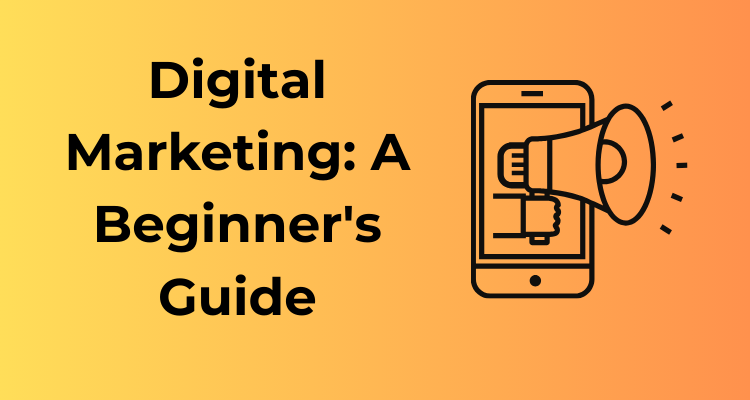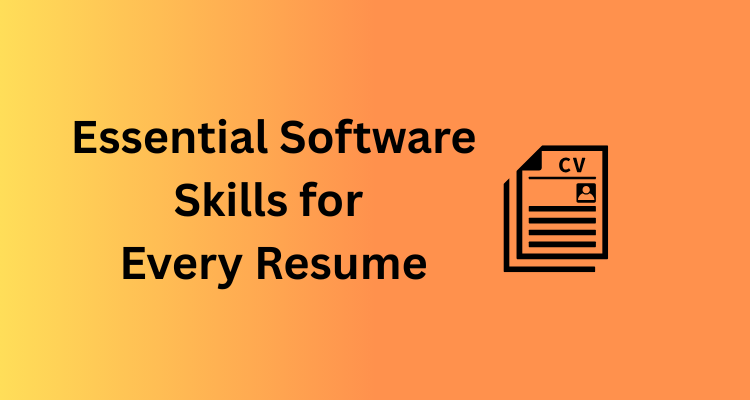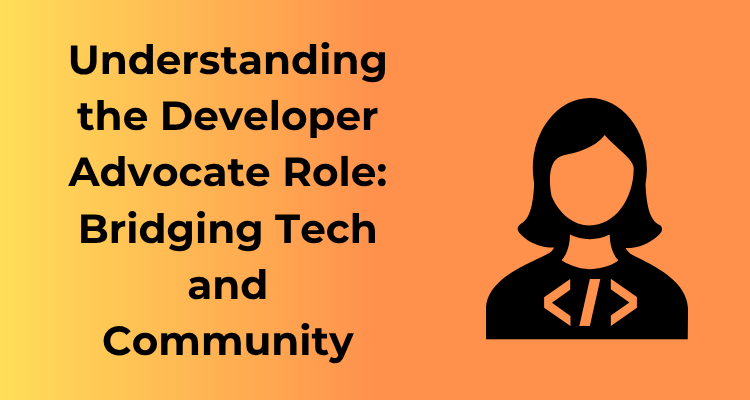So, you’re ready to dive into the digital world and establish your online presence? That’s fantastic! Starting from scratch might feel overwhelming at first, but trust me—it’s both achievable and exciting if you take it step by step.
Let’s break it down and build your online foundation together.

1. Define Your Brand Identity
Before you create anything, you need to know who you are (or who your brand is). Ask yourself:
- What is my mission?
- What problem am I solving, or what value am I offering?
- Who is my target audience?
- What makes me unique compared to competitors?
Your answers to these questions will shape your brand’s tone, style, and personality. Whether you’re creating inspirational content or selling a product, your audience connects with authenticity. Build something true to you!
2. Secure Your Digital Real Estate
Think of your website and social media profiles as your “digital storefront.” Here’s what you need to do:
- Register a domain name that reflects your brand. Keep it short, memorable, and easy to spell.
- Choose a reliable web hosting platform. Platforms like WordPress, Squarespace, or Wix are helpful for beginners.
- Set up professional email addresses tied to your domain (e.g., hello@yourbrand.com) for credibility.
- Claim your business profiles on social media platforms like Instagram, Facebook, LinkedIn, or wherever your audience hangs out.
Consistency is key! Ensure your usernames, profile images, and descriptions align across platforms to build trust immediately.
3. Create a User-Friendly Website
Your website is often the first impression customers get of your brand. Make it count! Here’s how:
- Choose a clean, mobile-friendly design. Over half of web traffic comes from mobile users now.
- Keep navigation simple so visitors can easily find what they’re looking for.
- Include an “About Us” page to tell your story—it’s a powerful way to connect.
- Make contact information accessible. Use clear call-to-action buttons like “Shop Now” or “Get in Touch.”
Remember, your website should serve both aesthetics and functionality. A polished site can make even a small brand look professional.
4. Produce Valuable Content
Great content is your ticket to engaging your audience and building trust. Focus on understanding your audience’s pain points and offering meaningful solutions. You don’t need to do it all—stick to what you’re good at. For example:
- Write blog articles addressing common questions in your industry.
- Create how-to videos or tutorials showcasing your expertise.
- Share testimonials and success stories to build credibility.
Remember, quality beats quantity!
5. Establish Your Online Reputation
Building a presence doesn’t stop at having a website and social media. It also involves building trust. Encourage customers to leave reviews, respond promptly to queries or comments, and engage genuinely with your online community. Over time, this reputation will stick and expand your reach.
Understanding Different Online Advertising Platforms
As you embark on this digital marketing journey, one critical puzzle piece is mastering online advertising platforms. Think of these platforms as your toolkit—each has a different function, appeal, and audience. Knowing when and how to use each can lead to online success. Ready to dive in? Let’s break it down!
Why Are Advertising Platforms Important?
Advertising platforms give you the power to reach the right people at the right time. Unlike traditional ads, these tools help you focus on your audience and track performance. Whether you want to bring in traffic, generate leads, or simply get the word out—digital platforms empower you to do it all.
The Most Popular Advertising Platforms
There are several big players in the online advertising space. Let’s walk through the top contenders:
- Google Ads: Ever wonder why some results are at the top of the Google search page? That’s Google Ads. It’s all about pay-per-click (PPC) advertising, where you bid on keywords. It’s perfect for businesses looking to capture search intent—meaning people already searching for something related to your offer.
- Facebook and Instagram Ads: These platforms are exceptional for targeting specific demographics. Have an eco-friendly product? You can focus on people who love sustainability. Launching a new fashion line? Target fashionistas scrolling their feeds. The visual nature of these platforms is a goldmine for brands.
- LinkedIn Ads: Looking to connect with businesses or professionals? LinkedIn is your best ally. Whether you’re advertising a B2B solution or promoting industry events, LinkedIn lets you reach decision-makers effortlessly.
- TikTok Ads: If your audience includes Gen Z or loves short, creative videos, TikTok is the way to go! TikTok ads allow for playful engagement and viral reach.
- YouTube Ads: Video is king! YouTube advertising works wonders for brand awareness and engagement. Whether it’s a 6-second bumper ad or an in-depth product tutorial, YouTube brings your message to life.
- Amazon Ads: If you sell on Amazon, advertising here boosts product visibility. Sponsored product ads and keyword targeting can skyrocket sales—ideal for eCommerce brands.

How Do You Choose the Right Platform?
Feeling overwhelmed? Don’t worry—you don’t need to use every platform. The trick is understanding where your target audience hangs out and aligning your message with the platform’s strength.
- Define Your Goal: Is your goal awareness, leads, or conversions? For instance, Google Ads works great for lead generation, while Instagram Ads excel in building brand visibility and culture.
- Understand Your Audience: Know their demographics, habits, and pain points. Facebook caters to a wide audience range, whereas LinkedIn is ideal for professionals and enterprises.
- Explore Platform Features: Each platform offers unique tools. For example, Facebook has advanced retargeting options, and YouTube allows customizable storytelling formats.
- Budget Wisely: PPC platforms like Google or Facebook let you set budgets that match your capabilities. Start small, test strategies, and scale accordingly.
Pro Tips for Online Advertising
- Focus On Your Ad Copy: Nail your message with clarity and creativity. Be concise, but make it irresistible.
- Test, Optimize, Repeat: A/B testing is your best friend. Experiment with visuals, headlines, and targeting to see what works best.
- Track ROI: Regularly review your campaign performance. Metrics like Click-Through Rates (CTRs) and Cost Per Acquisition (CPA) will guide improvements.
Mastering these advertising platforms does take time, but it’s worth every second. Each platform is like a different musical instrument, and your job is to create a symphony that resonates with your target audience. Take it step by step, and you’ll be advertising like a pro in no time!
The Role of SEO: Making Your Brand Easily Found
Search Engine Optimization, better known as SEO, might sound like a tech wizard’s secret weapon, but let me tell you—it’s not as tricky as it sounds. Think of SEO as your best friend in helping people discover your brand when they hit “search.” Whether it’s on Google, Bing, or even YouTube, SEO is about making sure your website or content is as visible as possible. Sounds good, right? Let’s unpack this so it’s not daunting but feels empowering instead!
Why Does SEO Matter?
Imagine you own a small bakery specializing in gluten-free cupcakes (yum!). Someone in your area types “best gluten-free cupcakes near me” into their search engine. If your website is optimized with the right keywords and practices, voilà—your business could show up right there on page one!
If your site doesn’t use SEO, odds are it will be buried somewhere deep on page five or six. And let’s be honest, nobody digs that far. SEO ensures your brand gets the digital spotlight it deserves.
Key SEO Ingredients You Need to Know
Let’s break it into bite-sized pieces because, trust me, these basics can work wonders for your brand:
- Keywords: These are the words and phrases people type into a search engine. Think about terms relevant to your business. For our bakery, it might be “gluten-free cupcakes” or “healthy treats.”
- Meta Descriptions: These are the short descriptions that show up on search results explaining what your page is about. A clear, concise meta description can help people click on your site.
- User-Friendly Website: Your website should not just look pretty but also load fast and be mobile-friendly. Google loves that, and so do visitors!
- Great Content Is King: Whether it’s blog posts, videos, or infographics, creating value-packed, fresh content is one of the best ways to show search engines (and your audience) that you’re knowledgeable and trustworthy.
- Link Building: This means getting other credible websites to link back to your content. Think of it as a digital word-of-mouth referral—it shows search engines that your site is valuable.
How to Get Started with SEO
- Do Keyword Research: Look into tools like Google Keyword Planner or Ubersuggest to find what people are searching for in your niche.
- Optimize Your Pages: Sprinkle relevant keywords naturally throughout your web pages—in titles, headers, and content. But don’t overdo it; nobody likes spammy content!
- Create Valuable Content: Start a blog or FAQ section to answer popular questions in your field. Be helpful, and your audience will appreciate it.
- Use Analytics: Tools like Google Analytics can help you track if your efforts are driving traffic to your site.
Social Media: More than Just Posts and Likes
Ah, social media! It’s where memes are born, trends go viral, and businesses (like yours) have a golden opportunity to thrive. But if you think social media marketing is all about posting pretty pictures and counting likes, let’s hit the refresh button. Social media is a vibrant, ever-evolving world that holds immense potential for businesses when approached strategically. Let’s dive in!
Why Social Media Is a Big Deal
First, let’s address the obvious: billions of people use social media daily. Platforms like Facebook, Instagram, LinkedIn, and TikTok are no longer optional for brands—they’re essential. Why? Because they offer a direct line to your audience, real-time engagement, and powerful tools for storytelling. The trick is moving beyond just “showing up” to actively connecting with people in meaningful ways.
Start with a Plan (Not Just a Post)
Diving into social media without a plan is like throwing spaghetti at a wall and hoping it sticks. Instead of winging it, here’s how you should approach it:
- Define your goals: Are you looking to boost brand awareness, drive website traffic, or create a community? Clear objectives will steer your content and approach.
- Know your audience: Are they Twitter-savvy professionals, Instagram-loving millennials, or Snapchat-happy teens? The better you know your audience, the easier it is to connect with them.
- Pick your platforms wisely: Every platform has its vibe—LinkedIn is perfect for B2B, while Instagram is ideal for showcasing visuals. Don’t spread yourself thin by trying to conquer them all at once. Focus where your audience spends their time.
It’s All About Value, Not Vanity Metrics
Sure, getting a ton of likes feels awesome, but what really matters is value: Are your efforts driving clicks, conversions, or conversations? Here’s how to focus on meaningful engagement:
- Consistency is key: Regular updates keep your audience hooked. A content calendar can help you stay on track without feeling overwhelmed.
- Engage, don’t just broadcast: Respond to comments, ask questions, and get involved in discussions. Show your audience that there’s a human behind your brand.
- Mix it up: From videos and reels to infographics and polls, keeping your content diverse and exciting keeps people coming back for more.
Trends to Keep an Eye On
Social media is like a trendy coffee shop—what’s hot today might not be tomorrow. So, watch for emerging trends like:
- Short-form videos: TikTok, Instagram Reels, and YouTube Shorts are the kings of bite-sized storytelling.
- Authentic content: Glossy ads are out; behind-the-scenes and “real” moments are in.
- Social commerce: Platforms like Instagram and Facebook now double as online marketplaces—take advantage of these features to boost sales.
Measuring Success
The secret to successful social media marketing is knowing what’s working and what’s not. Use insights provided by platforms to track performance metrics like engagement rates, click-throughs, and follower growth. Got underperforming posts? That’s okay. Use them as learning opportunities to fine-tune your strategy.
Authenticity Is Your Superpower
Above everything else, remember this: Your authenticity is your competitive edge. People can spot cookie-cutter content from a mile away. So, be real, be relatable, and don’t be afraid to show your unique personality as a brand.
Email Strategies that Keep Audiences Engaged
Emails might seem old-school in today’s world of TikTok reels and Instagram stories, but trust me when I say this—email marketing is **far from outdated**. It’s like that trusty coffee mug in your kitchen: familiar, effective, and always there to boost your energy when you need it most. Let’s dive into how you can use email strategies to not only keep your audience engaged but also turn them into loyal fans.
1. Personalization: Make it Personal
Nobody likes to be treated like just another fish in a sea of subscribers. When crafting your emails, take a moment to add that **personal touch**. Address your audience by their name (it’s not creepy—it’s thoughtful), and tailor your content to their behavior and preferences. For instance:
- Did a subscriber recently purchase a product? Give them tips on how to use it.
- Do they click on links about fitness? Send them your latest workout routine blog post.
People appreciate when content feels custom-made for them, and this strengthens the bond between you and your subscribers.
2. Craft Click-Worthy Subject Lines
First impressions matter! The subject line is your ticket to spark curiosity and invite readers to actually open your email. Keep it **short, snappy, and intriguing**. Questions, numbers, or even emojis can work wonders:
- Example 1: ” 5 Tools to Boost Your Productivity Overnight”
- Example 2: “Are You Making This Common Mistake in Your Marketing?”
The goal is to tap into their interest without coming off as clickbait-y. Balance is key.
3. Provide Value, Not Just Sales Pitches
This can’t be stressed enough: don’t make your subscribers feel like you’re only trying to sell them something. Think of your emails as a way to educate, entertain, or solve a problem. For example:
- Share a helpful tip or guide.
- Provide behind-the-scenes looks into your business.
- Offer free resources, like eBooks or discounts.
When audiences sense that value comes first, they’re much more likely to stick around—and even convert into paying customers when the time is right.
4. Timing Is Everything
Imagine getting an email about breakfast recipes at midnight. Odd, right? Timing is everything in email marketing. Send your emails when your audience is most active to increase the chances they’ll open and engage with your content. Use analytics tools to determine optimal sending times for your subscribers.
5. Encourage Interaction
Emails shouldn’t feel like lectures. Instead, encourage **two-way conversations**. Add calls-to-action (CTAs) that invite your audience to respond, click, or exchange ideas. You can ask simple questions like:
- “What’s your biggest challenge in [topic] right now?”
- “Reply to this email with your thoughts—I’d love to hear from you!”
This not only boosts engagement but also helps you better understand your audience.
6. Regularly Clean Your List
Here’s a secret tip many marketers forget: **not every subscriber is your ideal audience.** If people aren’t opening your emails or engaging with them, it’s okay to let them go. Maintaining an active, engaged list ensures your messages reach the right people—and keeps your email list healthy.
Using Analytics to Sharpen Your Marketing Game
Let’s face it: trying to succeed in digital marketing without leveraging analytics is like throwing darts in the dark and hoping for a bullseye. Sure, you *might* get lucky, but wouldn’t you rather have the tools to aim with precision? That’s where analytics come in – the trusty compass pointing you towards better decision-making and, ultimately, better results.
Why Should You Care About Analytics?
Think of analytics as the ultimate decoder for your digital marketing efforts. They help you understand what’s working, what’s not, and where there’s room for improvement. Without this vital data, you’re essentially driving without a map. And let’s be real – in the fast-paced digital world, that’s no way to reach your goals.
But analytics is more than just numbers and graphs. They tell a story – a story about your audience, their behaviors, preferences, and pain points. With these insights, you can craft smarter strategies that actually resonate with your audience.
Key Metrics to Watch Out For
If you’re feeling overwhelmed by all the analytics tools and reports out there, don’t worry! You don’t need to monitor EVERYTHING. Focus on these key metrics to sharpen your marketing game:
- Website Traffic: Pay attention to how many people are visiting your website and where they’re coming from (search engines, social media, email links, etc.). Tools like Google Analytics are your best friend here.
- Conversion Rates: How many of your visitors are taking a desired action, like signing up for your newsletter or making a purchase? High traffic is great, but it’s the conversions that truly count.
- Engagement Metrics: This includes metrics like bounce rate, average time spent on page, and most-visited pages. They reveal how engaging your content really is.
- Ad Performance: If you’re running ads, look at click-through rates (CTRs), cost per click (CPC), and return on ad spend (ROAS). These will show you exactly which ads earn their keep.
Turning Data into Action
Ok, so you’ve gathered all this juicy data. Now what? The magic happens when you use analytics to endlessly tweak and optimize your marketing strategies. Let’s discuss how:
- Spot Weak Points: Say you notice that a particular blog post has a high bounce rate. That’s your cue to rewrite it, add images, or improve the SEO.
- Double Down on What Works: If your weekly email newsletter has become a hit, analyze why. Is it the actionable tips? The subject lines? Use this knowledge to replicate the success.
- A/B Testing: Experiment with small changes, like testing different headlines or button colors on your landing page. Analytics will reveal which version performs better.
The Power of Real-Time Analytics
One of the coolest things about digital marketing is that you don’t need to wait weeks to see if something is working. Tools like Google Analytics or Social Media Insights let you view performance in real time. If a campaign underperforms, you can pivot immediately. Think of it like having a crystal ball – but better, because it’s based on hard data!
Staying Ahead Amid Constant Digital Changes
Let’s face it—digital marketing is a fast-paced world. New tools, algorithms, and trends seem to sprout up almost overnight. Just when you think you’ve cracked the code, something shifts! So, how can you stay relevant and ahead of the curve in this ever-evolving landscape? Let’s discuss how to keep your digital marketing game strong, no matter the changes.
1. Keep Learning, Always!
The moment you stop learning is the moment you fall behind. Digital innovation doesn’t pause, and neither should your curiosity. Follow industry experts, subscribe to digital marketing blogs, join webinars, or attend workshops. Platforms like HubSpot Academy, Google Skillshop, and Coursera are fantastic for free (or affordable) updates and certifications.
Make it a goal to dedicate even 20 minutes a day to read up on trends or strategies in your niche. Think of it as a daily snapshot of what’s new and noteworthy. Over time, those small steps will compound into actionable knowledge.
2. Experiment with Emerging Platforms and Features
Every few months, there’s a shiny new tool, feature, or platform in the digital marketing toolkit. Instead of avoiding them, dive in and explore! Whether it’s a new social media app or an innovative analytics platform, trying your hand at emerging technology could set you apart from competitors.
Don’t be afraid to experiment with features like Instagram Reels, TikTok ads, or AI-driven chatbots. Some may flop, but others could unlock new engagement or growth opportunities for your brand. Be curious and take calculated risks—you don’t want to be playing catch-up when something revolutionary proves to be the next big thing.
3. Foster a Habit of Staying Updated
Monitoring industry news is crucial. Algorithms evolve, policies change, and what worked in the past may no longer deliver results. Here are a few tips:
- Follow industry influencers: Thought leaders often tweet or publish blogs that explain changes in digestible terms.
- Subscribe to newsletters: Many services, like Moz and Neil Patel, deliver bite-sized updates directly to your inbox.
- Engage in communities: Online forums, like Reddit’s subs on digital marketing or LinkedIn groups, let you swap ideas and stay in the loop.
4. The Power of Analytics
Staying ahead is not just about adapting to changes—it’s also about spotting opportunities before others do. Analytics tools are your go-to superhero here. Platforms such as Google Analytics, SEMrush, or Hotjar can help you track patterns, identify what your audience is engaging with, and predict what could work in the future. Use this treasure trove of data wisely to guide experiments and fine-tune your strategy.
5. Focus on Agility
If the COVID-19 pandemic taught businesses one thing, it’s the importance of agility. Be ready to pivot when there are sudden shifts in audience behavior or industry standards. Having a flexible plan, rather than sticking rigidly to a year-long roadmap, allows you to adjust to current realities and capitalize on sudden opportunities.
6. Embrace Collaboration
Lastly, don’t overlook the value of networking. Join masterminds or connect with fellow marketers. Sometimes, the collective knowledge from a good conversation can bring you fresh perspectives and warn you about potential pitfalls. Collaboration keeps ideas flowing and ensures you’re staying informed by leveraging your peers’ expertise.









